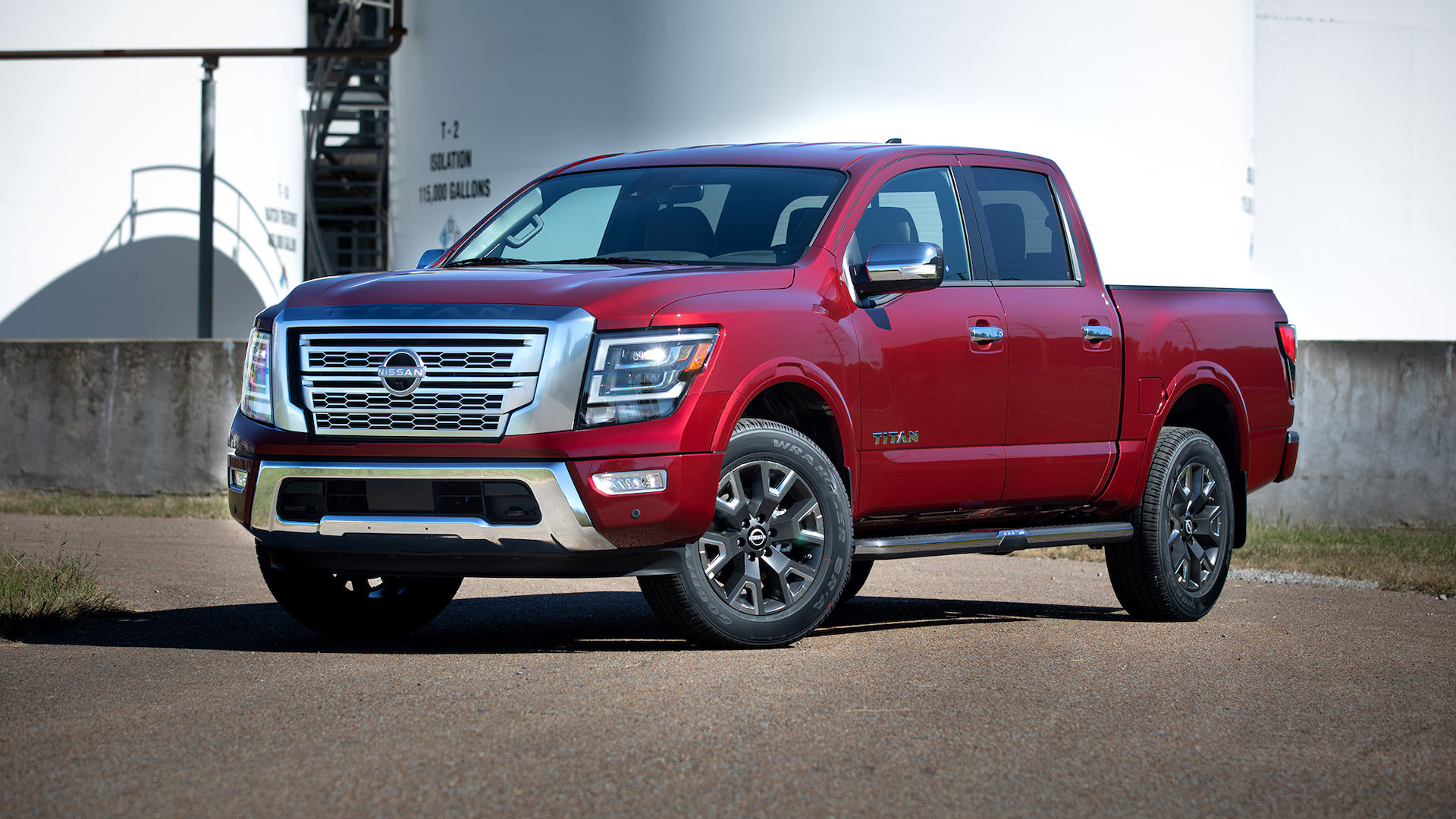Trucks have long been a symbol of rugged utility, versatility, and durability. From hauling heavy loads and towing trailers to navigating challenging off-road terrain, trucks serve a wide array of purposes for both personal and professional use.
Whether it’s a midsize pickup used for weekend adventures or a full-size heavy-duty truck relied on daily for demanding work, owning a truck is often about balancing capability with long-term value.
Yet, not all trucks are created equal in this respect. Some trucks manage to retain their value impressively over many years, while others depreciate rapidly, often due to reliability issues, maintenance costs, or shifting market demand.
Understanding which trucks hold their value—and why—is crucial for buyers who view their purchase as an investment, not just a short-term expense.
The value retention of a truck depends on multiple factors that go beyond just initial price or brand reputation. Durability and mechanical reliability top the list. A truck built with quality components that can withstand the wear and tear of heavy use is naturally more likely to stay on the road for years, minimizing costly repairs.
Longevity is often reflected in the truck’s ability to reach high mileage milestones with minimal mechanical failures. Trucks that develop frequent issues or require expensive repairs early on tend to lose value quickly as buyers become wary of potential ownership costs.
Another major factor influencing long-term value is the truck’s appeal and relevance in the market over time. Certain trucks develop loyal followings due to their proven performance, distinctive styling, or unique features.
For example, models with strong off-road capabilities or those that balance ruggedness with daily comfort often attract buyers who keep these trucks longer and are willing to pay more for used examples.
Brand reputation also plays a significant role. Brands with a history of producing dependable trucks—such as Toyota and Ford—often see their vehicles maintain value better than others. This is reinforced by a strong dealer and service network that ensures parts availability and affordable repairs, further extending the truck’s practical lifespan.
On the flip side, some trucks struggle to hold their value due to a combination of reliability concerns, limited market appeal, and poor build quality. Trucks that face recurring mechanical issues, rust problems, or outdated designs can quickly fall out of favor.
These factors lead to higher depreciation rates and a shrinking pool of buyers interested in used models. Additionally, trucks discontinued by manufacturers or those with a weak service infrastructure may experience rapid value decline, as maintaining them becomes inconvenient and costly.
Understanding these dynamics is vital for both new truck buyers and those looking at used vehicles. A truck that holds its value well over ten years not only saves money on depreciation but also typically delivers a better ownership experience through lower maintenance costs and fewer breakdowns.
Conversely, trucks that don’t last three years without significant problems often end up costing more in the long run, despite potentially lower initial prices.
In this article, we will explore five trucks renowned for holding their value over a decade, thanks to reliability, strong market demand, and solid engineering. We will also examine five trucks that tend to depreciate rapidly and face durability challenges, warning potential buyers of the pitfalls to avoid.
By the end, readers will have a clearer understanding of what to look for when choosing a truck that combines performance with lasting value—a crucial insight in a market where trucks are more than just vehicles, but essential tools and investments.
ALSO READ: 5 Cars That Avoid Transmission Problems and 5 That Constantly Slip
5 Trucks That Hold Their Value for 10 Years

1. Toyota Tacoma
The Toyota Tacoma has carved out a legendary status among midsize pickups, and for good reason. Over the years, it has consistently proven itself as a durable, reliable, and highly practical truck that withstands the test of time. The key to the Tacoma’s value retention lies in Toyota’s meticulous engineering and build quality.
Unlike many competitors, Toyota has kept a conservative approach to innovation, focusing instead on tried-and-true mechanical components that have been refined to near perfection.
This conservative strategy means fewer surprises in reliability and lower maintenance costs. Owners often report driving Tacomas well beyond 200,000 miles with minimal major repairs, making it a true long-term investment. This legendary longevity means fewer worries about unexpected mechanical failures that can drastically reduce a truck’s resale value.
In addition to mechanical durability, the Toyota Tacoma’s off-road capability has become a defining feature that attracts a passionate buyer base. The availability of factory off-road packages like the TRD Off-Road and TRD Pro editions increases desirability in the used market.
Buyers looking for a capable truck that can handle rugged trails without sacrificing reliability often seek out Tacomas, which sustains higher resale prices.
Furthermore, the Tacoma’s strong reliability ratings from organizations like J.D. Power and Consumer Reports reinforce consumer confidence. This positive reputation, combined with Toyota’s strong dealer support and parts availability, ensures that Tacomas remain functional and desirable well past their original sale date.
The design of the Tacoma also contributes to its lasting value. Toyota has balanced modern features and technology with rugged simplicity, which appeals to both new and traditional truck buyers.
The cabin ergonomics, intuitive controls, and durable materials have aged well compared to competitors that either feel outdated or overly complex. Its midsize footprint also hits a sweet spot for buyers who want a truck that is easier to maneuver and park than full-size pickups but still offers strong utility.
This balanced approach results in steady demand on the used market, further bolstering resale values. Plus, limited special editions and color options help certain Tacomas stand out as collectible models, giving them an additional value boost.
Finally, Toyota’s reputation for high resale value is not just anecdotal but supported by various automotive value guides. The Tacoma regularly tops lists of trucks with the slowest depreciation rates, often holding onto 60-70% of its original value after ten years—remarkably high in the pickup segment.
This resale strength benefits not only private sellers but also fleet buyers and rental companies who depend on predictable depreciation for budgeting.
When it comes to long-term ownership, the Toyota Tacoma offers a combination of reliability, practical utility, and market demand that few trucks can match, making it a smart buy for those looking to preserve value over a decade or more.
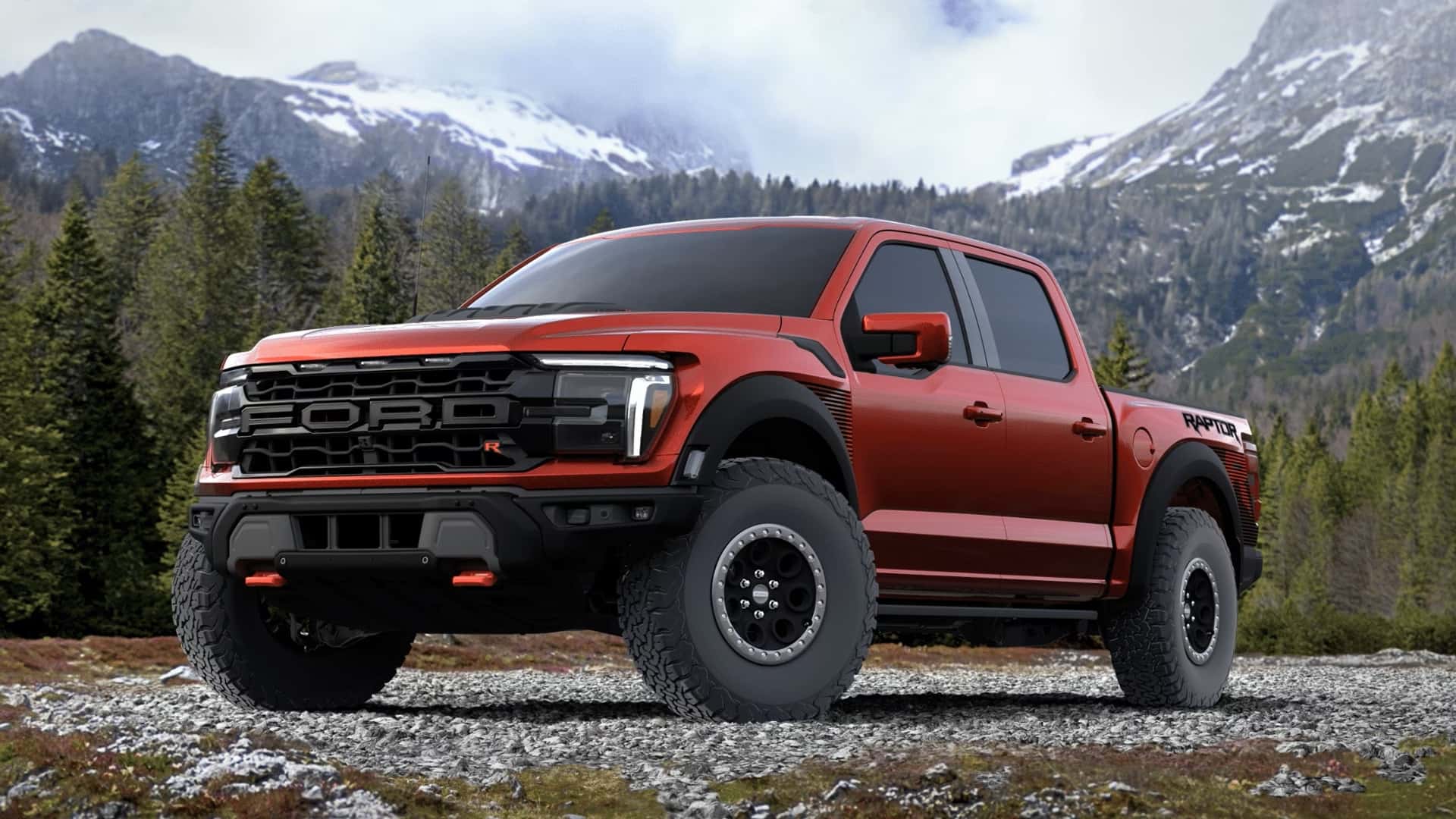
2. Ford F-150
The Ford F-150 is an American automotive icon, synonymous with toughness and versatility. As the best-selling vehicle in the United States for decades, the F-150 enjoys a unique status that directly translates into strong resale value.
The truck’s widespread popularity creates a highly liquid market, meaning there are always eager buyers looking for dependable, well-maintained used F-150s. This demand helps cushion the F-150’s depreciation curve, as buyers are willing to pay premium prices for trucks with proven capabilities and strong brand recognition.
From an engineering standpoint, Ford has continually refined the F-150 to meet evolving consumer needs and regulatory standards. Innovations such as the aluminum-intensive body, advanced EcoBoost turbocharged engines, and a wide range of trim levels demonstrate Ford’s commitment to blending power, efficiency, and comfort.
This combination appeals to a broad buyer base—from contractors needing a rugged workhorse to families seeking a spacious, feature-packed vehicle. The truck’s ability to adapt to many roles makes it versatile in the resale market, enhancing its long-term value.
Ford’s reputation for solid towing capacity, payload, and overall durability also plays a vital role in the F-150’s value retention. The truck has earned accolades for its powerful engine options, particularly the 3.5-liter EcoBoost V6, which delivers impressive towing and fuel efficiency.
When paired with Ford’s extensive network of service centers and parts suppliers, owners find it easier to maintain and repair their trucks, ensuring these vehicles stay roadworthy well beyond their initial warranty period. Maintenance costs remain relatively reasonable compared to some competitors, further supporting sustained ownership value.
Beyond mechanics, the F-150 is a leader in technology and safety, incorporating features such as adaptive cruise control, lane-keeping assist, and state-of-the-art infotainment systems.
These features keep older F-150s competitive with newer models, helping to preserve appeal and demand in the used market. Furthermore, Ford’s investment in creating multiple variants, including hybrid and high-performance Raptor models, diversifies its appeal and resale value.
Collectively, these factors make the Ford F-150 not just a strong performer on the job but also a sound financial choice for buyers who want a truck that holds its value for a decade or more.
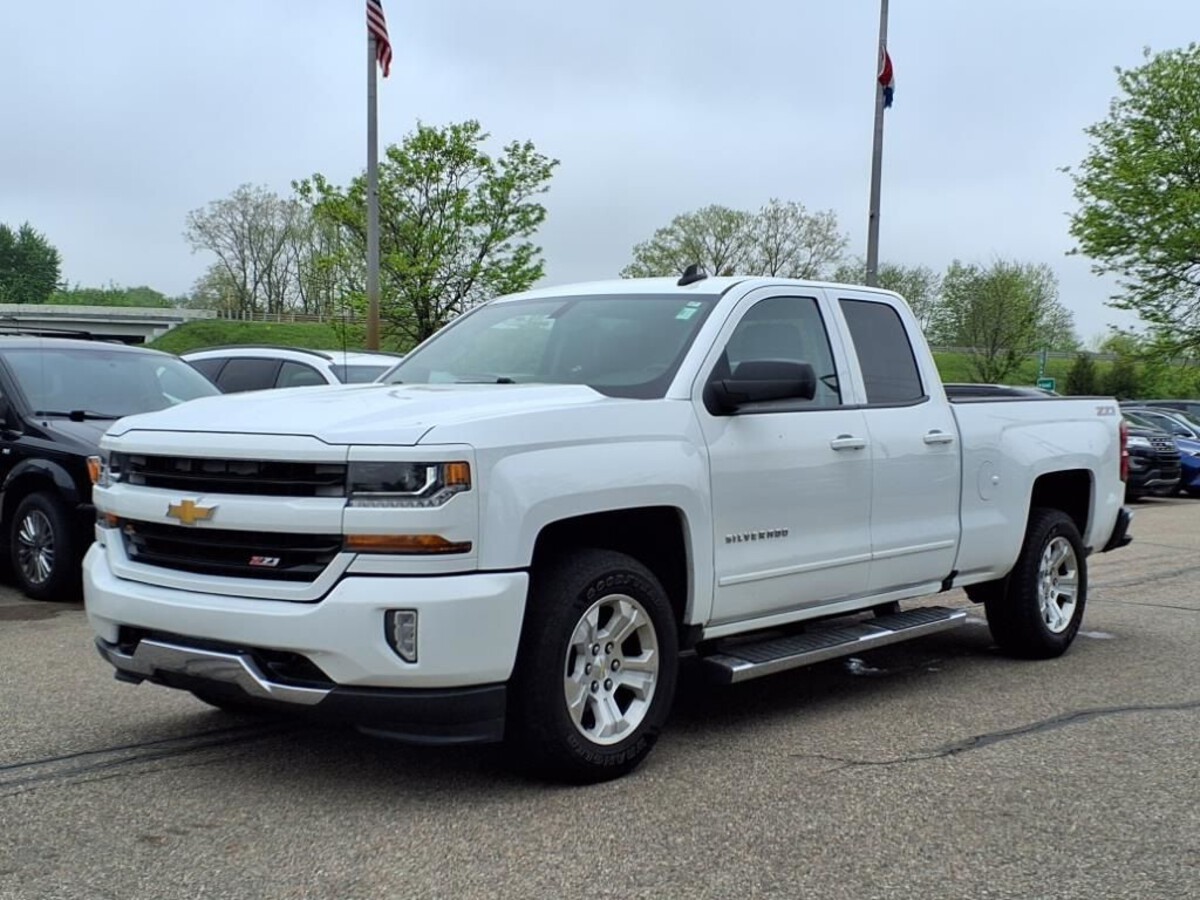
3. Chevrolet Silverado 1500
The Chevrolet Silverado 1500 is a staple of the American full-size pickup market, known for its rugged capability and user-friendly design.
Chevrolet has strategically positioned the Silverado to attract a wide range of buyers—from those who need a reliable work truck to those who want a comfortable family hauler. This broad appeal helps maintain steady demand for used Silverados, which translates into better long-term value retention.
Chevy has consistently upgraded the Silverado’s powertrain options to provide a balance between power and fuel efficiency. The availability of V6 and V8 engines, including the fuel-efficient turbocharged four-cylinder and the powerful 6.2-liter V8, allows buyers to choose a truck that suits their performance and budget needs.
This flexibility not only broadens the truck’s customer base but also ensures that used Silverados remain relevant in the market. Additionally, the Silverado’s towing and payload capacities are competitive in its segment, making it a dependable option for work-related tasks and heavy hauling.
In terms of comfort and technology, Chevrolet has made considerable strides in recent years. The Silverado offers spacious and well-appointed interiors with features such as Apple CarPlay, Android Auto, and advanced driver-assist systems.
These modern amenities enhance ownership satisfaction and make the truck more attractive on the resale market. Furthermore, the Silverado is known for its smooth ride quality, which sets it apart from some of its rougher-riding competitors.
Buyers looking for a balance between work capability and everyday usability tend to gravitate toward the Silverado, maintaining steady resale interest.
From a reliability perspective, the Silverado benefits from General Motors’ long history of truck engineering. While no vehicle is without flaws, the Silverado’s mechanical systems have proven reasonably durable over time.
Coupled with a widespread dealership and parts network, this makes repairs and maintenance manageable for owners looking to keep their trucks running for years. This support system plays a significant role in preserving the Silverado’s value, as trucks that can be easily serviced tend to command higher prices on the used market.
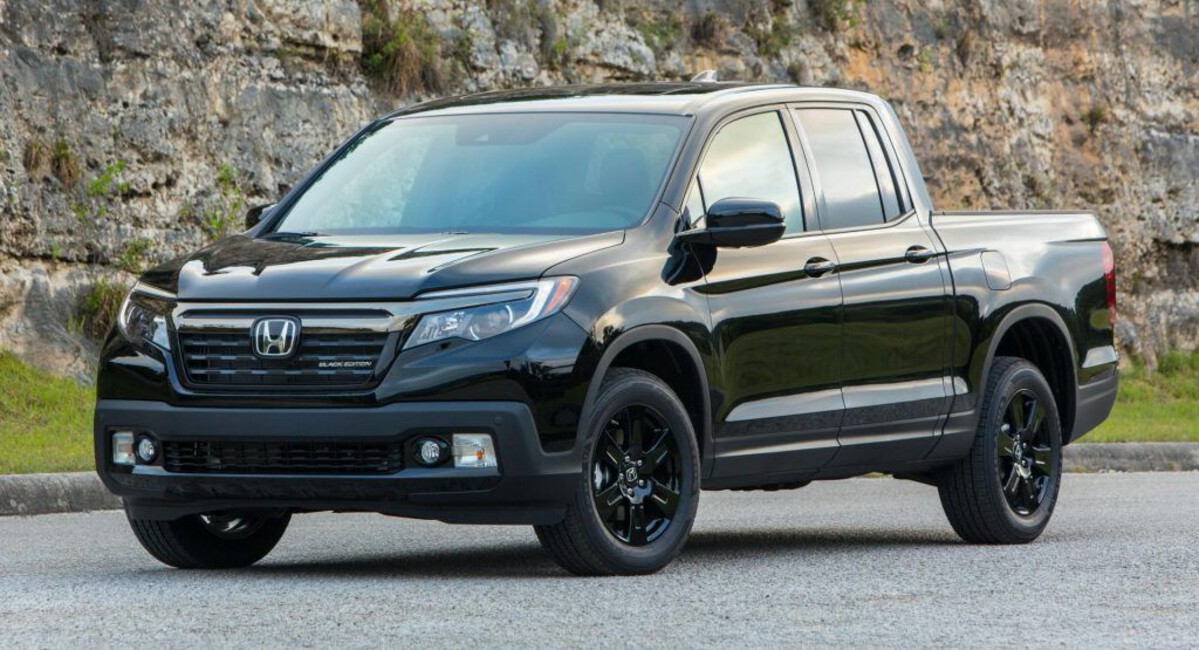
4. Honda Ridgeline
The Honda Ridgeline stands apart from most pickups with its unibody construction, car-like ride, and focus on comfort and practicality. Unlike traditional body-on-frame trucks, the Ridgeline borrows architecture from Honda’s SUVs and crossovers, resulting in a more refined driving experience that appeals to a different segment of truck buyers.
This unique design approach is a key reason the Ridgeline holds its value, as it offers the best of both worlds—a capable pickup bed with the comfort and handling of a passenger vehicle.
Honda’s reputation for reliability is a critical factor in the Ridgeline’s long-term value. The brand is synonymous with engineering excellence, and the Ridgeline benefits from this legacy. It features a robust V6 engine paired with a smooth-shifting transmission, and owners report few major issues even after many years on the road.
The Ridgeline’s maintenance costs are generally lower than those of traditional pickups, largely because of its less complex suspension and drivetrain components. This reliability translates directly to slower depreciation and a healthier resale market.
The Ridgeline also shines in terms of innovation and user-friendly features. Its dual-action tailgate, lockable in-bed trunk, and spacious, comfortable cabin offer practical benefits that resonate with buyers seeking versatility.
Additionally, the truck’s fuel efficiency often exceeds that of larger, heavier pickups, appealing to those mindful of long-term operating costs. The Ridgeline’s ability to function well as a daily driver, family vehicle, and light-duty truck makes it a unique option that holds its value in a crowded segment.
Finally, the Honda Ridgeline appeals strongly to buyers in urban and suburban markets, where traditional pickup trucks may be less popular due to size and ride quality.
This steady niche demand helps preserve resale values. Despite not having the aggressive styling or off-road reputation of some competitors, the Ridgeline’s blend of dependability, comfort, and practicality makes it one of the best long-term value pickups available today.
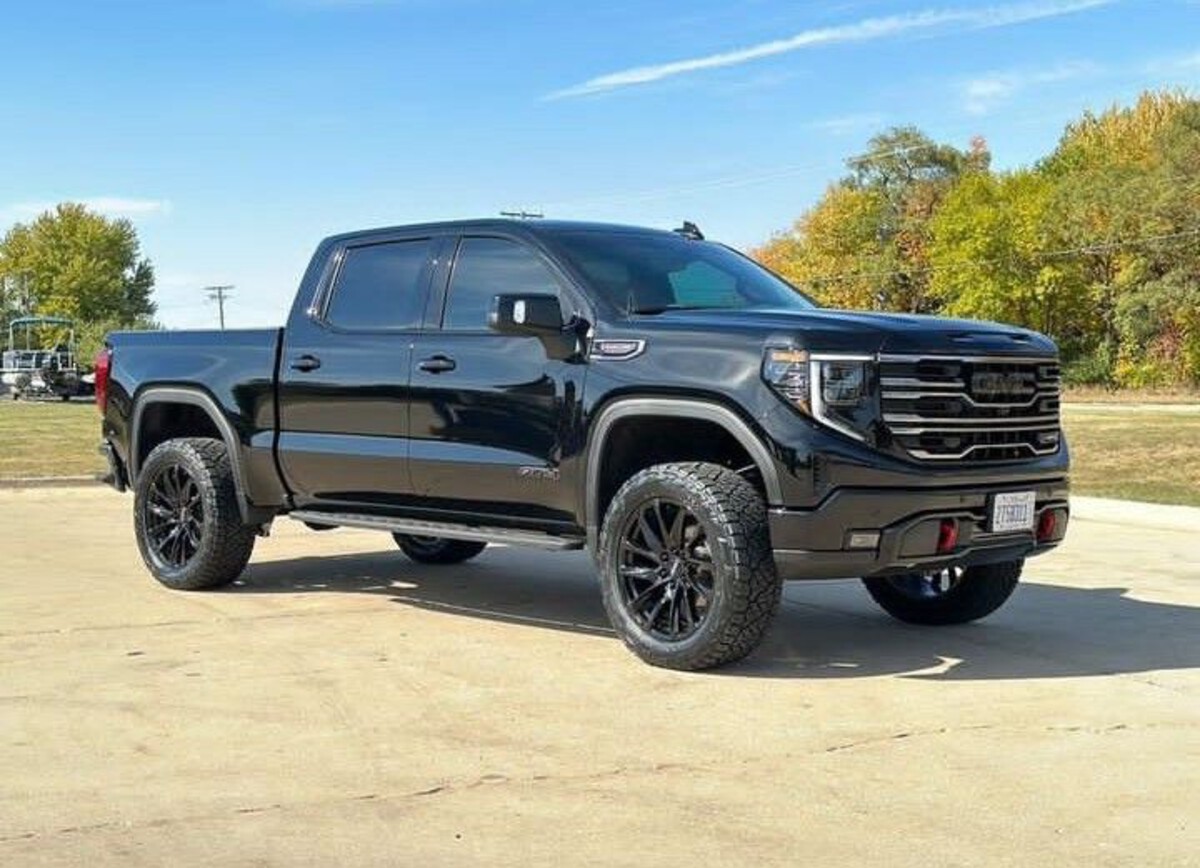
5. GMC Sierra 1500
The GMC Sierra 1500 offers a refined alternative to its Chevrolet Silverado sibling, combining many of the same mechanical benefits with enhanced luxury and styling.
This upscale positioning helps the Sierra maintain strong resale values, particularly in trims that emphasize premium features. Buyers who want a capable truck but also appreciate a more comfortable and tech-savvy interior tend to gravitate toward the Sierra, boosting its used market desirability.
GMC has invested in creating a premium brand experience with the Sierra by offering advanced technology such as heads-up displays, adaptive suspension systems, and sophisticated infotainment options.
These features elevate the driving experience and help older Sierra models feel competitive even years after their initial release. This continued appeal is important in supporting the truck’s resale value over time.
Mechanically, the Sierra shares much of its proven drivetrain architecture with the Silverado, including reliable V8 engines and durable transmissions.
This commonality ensures good parts availability and dealer support, which are critical for owners seeking to maintain their trucks over a decade or more. The Sierra’s ride quality, noise insulation, and interior materials often surpass many other pickups in its class, enhancing owner satisfaction and willingness to hold onto the vehicle for the long haul.
The GMC brand’s reputation for quality and innovation plays a significant role in the Sierra’s value retention. Buyers who prioritize refinement and comfort alongside traditional truck capabilities find the Sierra particularly attractive.
This distinct market positioning reduces competition with lower-end models and helps the Sierra sustain better prices on the used market. As a result, the Sierra 1500 remains one of the most financially sensible choices for buyers seeking a full-size truck with strong value retention and long-term reliability.
5 Trucks That Don’t Last 3
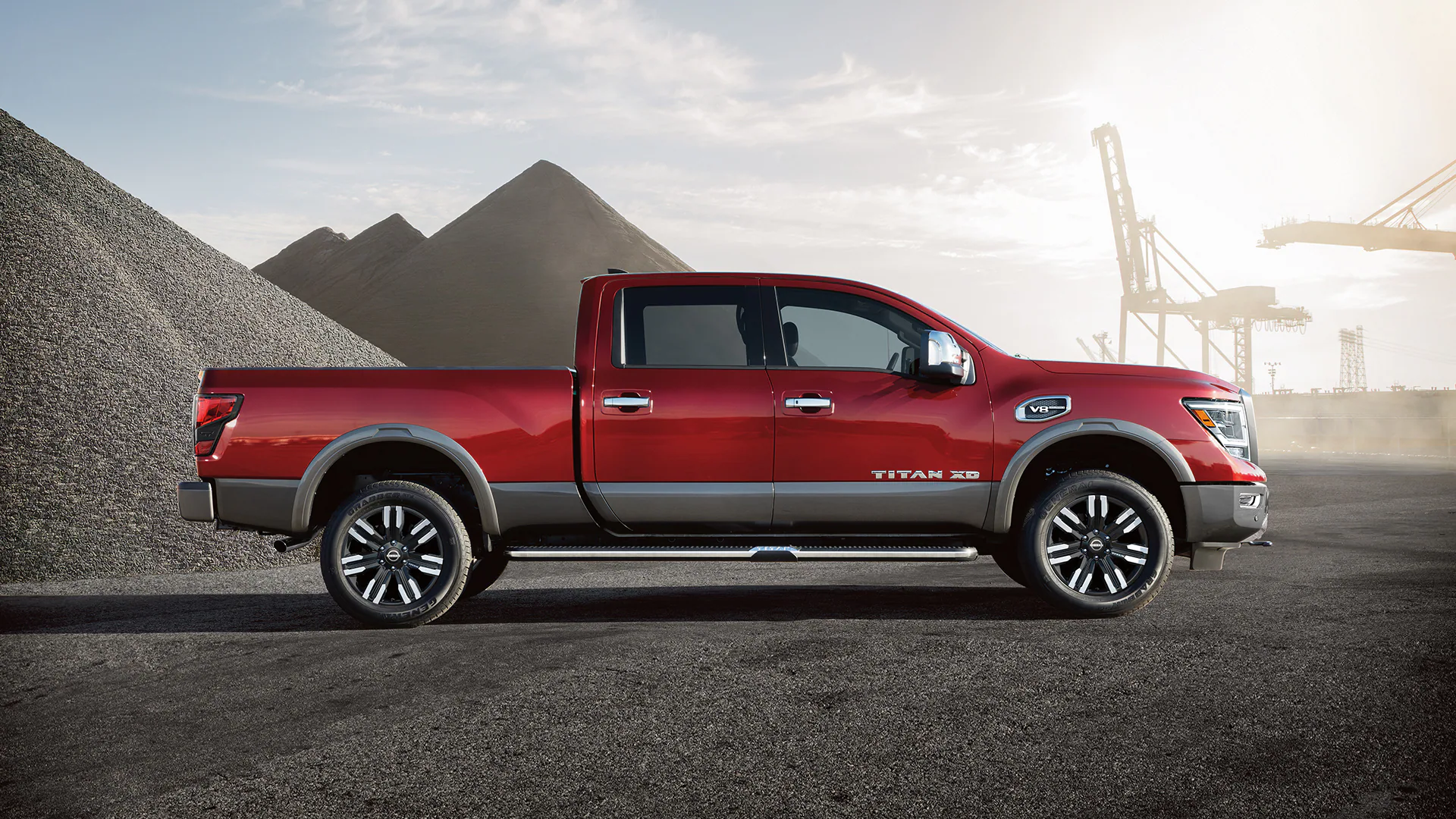
1. Nissan Titan
The Nissan Titan, despite being Nissan’s full-size pickup contender, has struggled to establish a strong foothold in the highly competitive truck market, and this has had a direct impact on both its longevity and resale value.
From its initial release, the Titan was often overshadowed by more dominant players like the Ford F-150, Chevrolet Silverado, and Ram 1500, all of which boast better performance, stronger dealer networks, and more proven reliability.
Nissan’s approach to the Titan leaned heavily on offering a well-equipped interior and competitive pricing but fell short in critical areas like towing capacity, fuel efficiency, and engine performance.
Mechanically, the Titan has been plagued by a series of issues that affect its ability to last beyond the short term. Owners frequently report problems related to the transmission, including rough shifting and premature failure, which can lead to costly repairs early in the truck’s life.
Additionally, certain model years have faced issues with engine overheating, electrical system malfunctions, and suspension components wearing out prematurely.
These problems not only affect the truck’s reliability but also its reputation, which in turn depresses resale values. The rapid decline in value means many owners see significant depreciation within just a few years, making the Titan a risky investment for those hoping for long-term ownership.
Another factor hurting the Titan’s durability and value is Nissan’s relatively weak dealer and service network for trucks compared to its competitors. This makes sourcing replacement parts and accessing specialized repair services more challenging and expensive, especially outside of major metropolitan areas.
Consequently, many owners opt to sell their Titans early to avoid escalating maintenance costs. The lack of widespread aftermarket support also discourages modifications or repairs that might extend the truck’s lifespan.
Lastly, the Titan’s styling and interior design have not aged well compared to rivals, contributing to weaker demand in the used truck market. While Nissan has introduced a second-generation Titan with improvements, the lingering effects of early problems and poor resale performance mean many buyers remain cautious.
For someone seeking a dependable truck that will hold up well for at least three years, the Nissan Titan’s history suggests it’s best approached with caution.
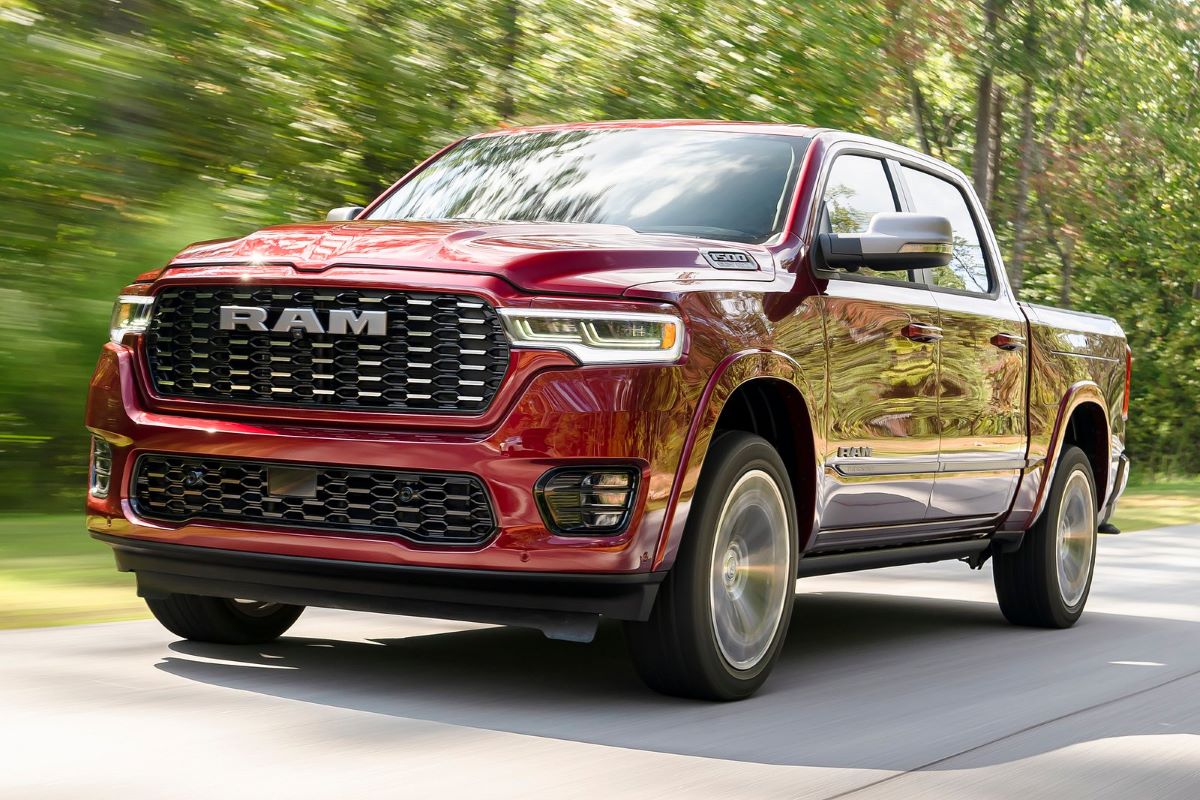
2. Ram 1500 (Older Models)
The Ram 1500 is a truck with a complicated history. While the latest generations have earned praise for quality, technology, and comfort, the older Ram 1500 models—particularly those from the early 2000s through the early 2010s—have developed a reputation for being less reliable and prone to expensive mechanical issues.
One of the most common complaints among owners of these older trucks involves transmission problems. The automatic transmissions in many older Rams were known for slipping, rough shifting, and outright failures, often requiring costly rebuilds or replacements well before the trucks reached 100,000 miles.
In addition to transmission woes, older Ram 1500s frequently suffered from electrical system malfunctions. From dashboard warning lights flickering erratically to power windows and locks failing, these electrical gremlins were a persistent source of frustration.
Suspension components were another weak point; many owners experienced premature wear in ball joints, control arms, and bushings, leading to poor handling and increased repair costs. These issues collectively contributed to higher than average maintenance expenses, which discouraged long-term ownership.
The combination of mechanical flaws and rising repair bills results in a steeper depreciation curve for these older Rams. Buyers in the used market are wary of trucks with spotty reliability histories, pushing prices down and making resale difficult.
Furthermore, early Ram 1500 models lacked the refinement and comfort that modern buyers expect, such as advanced infotainment systems or sophisticated safety features, further diminishing their appeal.
While some Ram owners maintain their trucks well and report decent longevity, the risks associated with owning an older Ram 1500 mean it doesn’t have the widespread reputation for durability that helps hold value.
For buyers considering an older model, thorough inspections and cautious purchasing are essential. Overall, the older Ram 1500s exemplify a truck that often struggles to last three trouble-free years without significant investment.

3. Ford Ranger (Pre-2019 Models)
Before its 2019 revival in the U.S. market, the Ford Ranger’s earlier models, especially those produced in the late 1990s through mid-2010s, are generally considered less durable and depreciate quickly.
These older Rangers have a mixed reputation among owners and experts alike. On the positive side, they are known for being simple and easy to work on, but this simplicity sometimes came at the cost of reliability and modern comfort.
Rust is one of the biggest issues with pre-2019 Rangers. Trucks from regions with harsh winters and road salt exposure frequently develop rust on critical structural components such as the frame and suspension mounts, severely impacting the vehicle’s safety and lifespan. Rust repair can be expensive and labor-intensive, which many owners avoid, leading to trucks being scrapped earlier than necessary.
Engine and transmission problems also contribute to the Ranger’s lack of longevity. Some engines are prone to overheating or oil consumption, while certain automatic transmissions have shown tendencies toward early wear and failure.
These mechanical shortcomings not only reduce the truck’s operational lifespan but also increase the cost and hassle of ownership. Compounding these problems is the relatively outdated interior and lack of modern safety features in older Rangers, which make them less appealing on the resale market.
As a result, many owners sell their pre-2019 Rangers after only a few years due to these issues and rapidly declining values. The reintroduced 2019 model addressed many of these concerns with improved powertrains, modern technology, and better safety features, but the older Rangers still lag behind in durability and value retention. For buyers looking at older models, these factors should weigh heavily in the decision-making process.
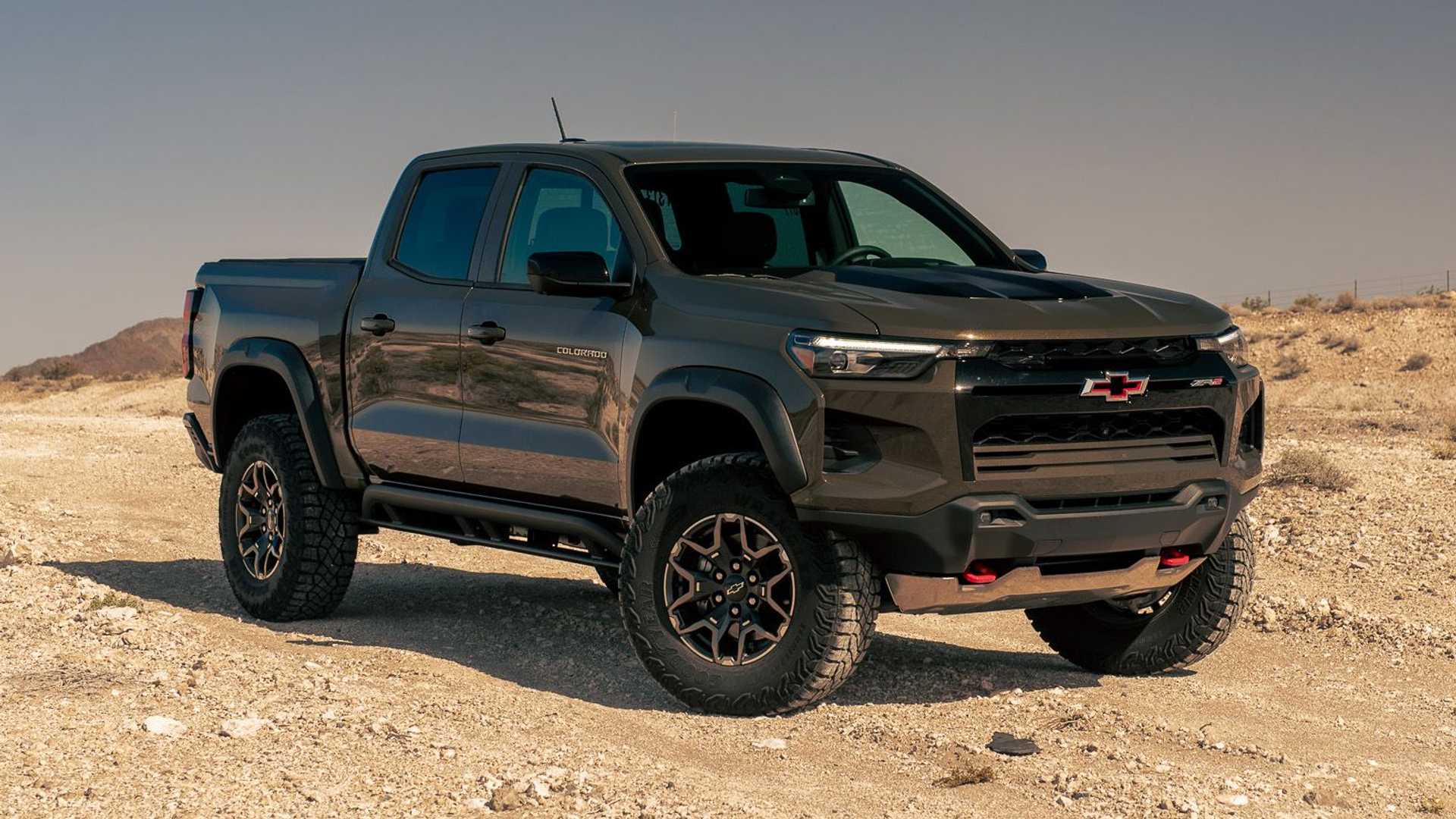
4. Chevrolet Colorado (First Generation)
The first-generation Chevrolet Colorado, spanning from 2004 to 2012, was an important player in the midsize pickup segment but was far from perfect in terms of longevity and value retention. Many owners experienced troubling reliability issues that have since tarnished the truck’s reputation.
One of the most significant problems involved the transmission. Numerous complaints about rough shifting, delayed engagement, and transmission failure have been documented, especially in early model years. Repairing or replacing these transmissions often required expensive intervention that discouraged long-term ownership.
Electrical system problems were also common, with owners facing issues ranging from faulty wiring harnesses to malfunctioning sensors that affected engine performance and dashboard functionality. Suspension and steering components showed signs of premature wear as well, resulting in a rougher ride and increased maintenance costs.
These mechanical and electrical shortcomings often resulted in owners abandoning their Colorados or trading them in early, contributing to accelerated depreciation.
Additionally, the first-generation Colorado’s interior was criticized for its cheaply made plastics and outdated design, which didn’t age well compared to competitors.
While the truck offered decent fuel economy and maneuverability, these positives were often overshadowed by reliability concerns. The limited engine choices, with most buyers gravitating toward the less powerful four-cylinder or V6 engines, also limited its appeal in towing and hauling tasks, making it less versatile than some rivals.
Chevrolet’s response came with the release of the second-generation Colorado, which corrected many of these issues with better engines, improved transmissions, and upgraded interiors.
However, the first-generation models remain the majority in the used market, where buyers should be wary of the common issues that reduce the truck’s lifespan and value. For anyone considering a first-generation Colorado, thorough inspections and awareness of potential repairs are vital.
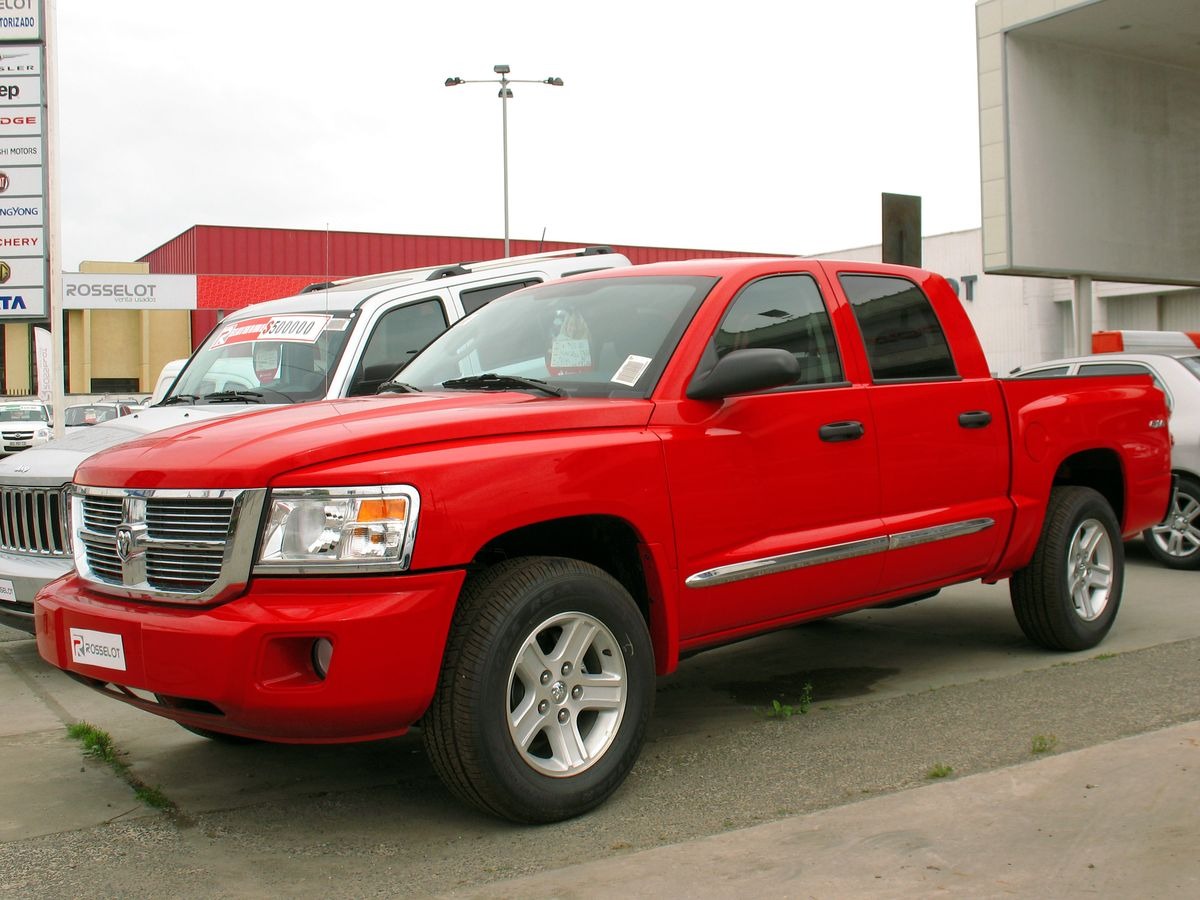
5. Dodge Dakota
The Dodge Dakota was a popular midsize pickup for many years, known for its relatively powerful engine options and comfortable ride. However, despite these strengths, the Dakota struggled with reliability and durability, which significantly affected its long-term value and lifespan.
One major concern was the engine, especially in later model years, where owners reported issues such as head gasket failures, oil leaks, and overheating. These problems often led to expensive repairs that many owners were unprepared for.
Rust was another persistent problem for the Dakota, especially in trucks exposed to northern climates where salt and moisture accelerate corrosion. Premature rust on frames, doors, and undercarriage components led to structural integrity issues, reducing safety and longevity. Repairing this kind of damage can be cost-prohibitive, leading many owners to retire their Dakotas early.
Electrical and transmission issues also contributed to the Dakota’s decline. Problems such as intermittent electrical failures, dashboard warning light errors, and transmission slipping were common complaints, increasing frustration and repair bills.
Compounding these mechanical issues was the fact that Dodge discontinued the Dakota in 2011, limiting parts availability and dealer support over time. This discontinuation made ownership riskier for those hoping to keep their trucks for many years, further driving down resale values.
Overall, while the Dodge Dakota offered a nice blend of power and comfort during its production run, its issues with durability and maintenance costs mean it often does not last beyond a few years without significant investment. Buyers interested in long-term truck ownership generally look elsewhere, as the Dakota’s resale value suffers accordingly.
ALSO READ: 5 Low-Maintenance Trucks and 5 That Need Constant Work
Choosing a truck is a significant decision that extends far beyond initial purchase price. It requires careful consideration of not only how the truck performs today but how it will hold up—and hold its value—over the coming years.
As we’ve seen, some trucks like the Toyota Tacoma, Ford F-150, Chevrolet Silverado, Honda Ridgeline, and GMC Sierra have established themselves as reliable, durable, and popular models that continue to command high resale prices even after a decade.
These trucks share common traits such as strong mechanical reliability, a reputation for toughness, versatile functionality, and wide market appeal. Buyers who prioritize these qualities often enjoy a lower total cost of ownership, fewer unexpected repairs, and better trade-in or resale values.
In contrast, trucks like the Nissan Titan, older Ram 1500 models, pre-2019 Ford Rangers, first-generation Chevrolet Colorados, and Dodge Dakota tend to depreciate quickly and face challenges with reliability and maintenance. These trucks illustrate the risks inherent in opting for vehicles with known mechanical weaknesses, limited dealer support, or design flaws that can shorten their lifespan.
For owners, this often translates to higher repair costs, increased downtime, and difficulty finding willing buyers on the used market. Moreover, rapid depreciation can mean significant financial losses if one decides to sell or trade the truck within a few years.
One of the biggest takeaways from this comparison is the importance of thorough research and informed decision-making when buying a truck. While a lower sticker price or attractive feature package may initially lure buyers toward a particular model, these short-term gains can be quickly offset by depreciation and maintenance headaches.
It’s crucial to evaluate a truck’s track record for reliability, understand the cost of ownership over time, and consider the availability of parts and service networks. These factors heavily influence whether a truck will serve well as a dependable daily driver or workhorse over the long haul.
Furthermore, potential buyers should also consider their own needs and usage patterns. A truck that holds value well might not always be the best fit for every user. For example, a heavy-duty truck designed for towing and hauling might depreciate less but could be overkill for someone primarily seeking a comfortable commuter vehicle.
Conversely, a midsize truck with lower maintenance costs and a reputation for reliability might provide better value for those with lighter workloads. Aligning one’s priorities with the strengths of specific truck models can enhance satisfaction and financial outcomes.
In today’s evolving automotive landscape, with advances in hybrid and electric trucks gaining traction, value retention will continue to be shaped by innovation and consumer preferences.
However, the fundamental principles of durability, reliability, and strong market demand will remain key drivers of truck longevity and resale value. Buyers who understand these principles and pay attention to a truck’s history will be better positioned to make choices that protect their investment.
In summary, the trucks that hold their value over ten years tend to be those built on proven platforms with a focus on reliability and broad market appeal.
Conversely, trucks that don’t last three years without major issues typically suffer from reliability problems, weak service networks, or outdated designs. By keeping these insights in mind, truck buyers can avoid costly mistakes, enjoy greater peace of mind, and ultimately get more out of their vehicles—both on the road and in their wallets.

